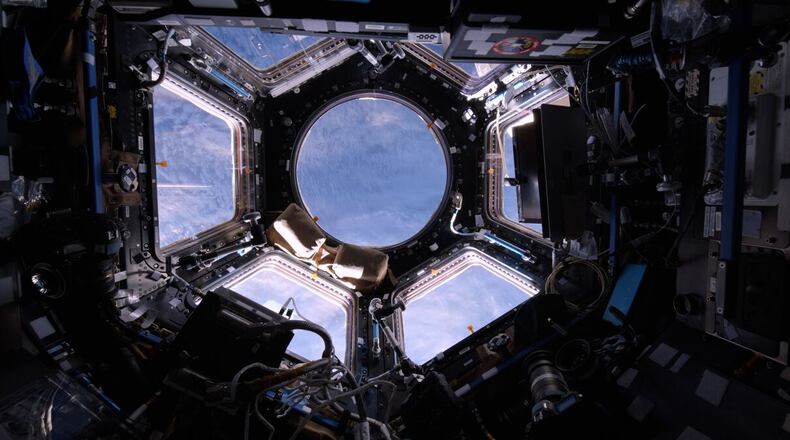“A Beautiful Planet” features awe-inspiring footage of earth from space. This stunning, thrilling 3D space documentary gives viewer a sense of what it looks like, and what it must feel like being in space.
Made in cooperation with the National Aeronautics and Space Administration (NASA), the film features footage of our magnificent planet — and the marks of humans have had on it over time — captured by the astronauts aboard the International Space Station (ISS).
From space, earth blazes at night with the electric intensity of human expansion. In many cases, you can’t see country borders from above.
Nightime footage of South and North Korea, however, provides a dramatic exception. South Korea is brightly lit and North Korea is in almost in complete darkness.
“A Beautiful Planet” opens today at the Fernbank Museum of Natural History. It will run until Sept. 15.
See the trailer here: http://youtu.be/QJpLjXbGIkQ
Here are 7 things to know about the film:
— The IMAX cameras spent about 15 months in space, traveling more than 180 million miles, and were operated by astronauts across three separate missions.
— The space station crew shot most of the film’s footage and images.
— Filmakers also show what it’s like to live and work in space — as long as eight months at a time. Footage shows how astronauts eat, sleep and exercise in space. It even shows how they celebrate Christmas in space.
— The zero-gravity expresso cup used by European Space Agency astronaut Samantha Cristoforetti of Italy (and who loves her espresso) was co-invented by Astronaut Don Pettit, who worked studied the flow of liquids during his time aboard ISS.
— The filmmakers spent roughly three years selecting just the right camera and equipment before deciding on the Canon EOS C500 EF digital camera, the Canon EOS 1D-C digital SLR cameras, and a selection of Canon Cinema Zoom and Prime lenses.
— In all, the astronauts photographed a quarter of a million images and captured over 10 terabytes of video footage.
— This is the first IMAX film to use the Cupola, which contains seven windows arranged in a hemisphere to provide a 180-degree field-of-view.
The 411:
Tickets: $13 for adults; $12 for seniors, $11 for children and $8 for Museum members. 767 Clifton Rd, Atlanta.
www. fernbankmuseum.org. 404.929.6400.
About the Author
Keep Reading
The Latest
Featured



